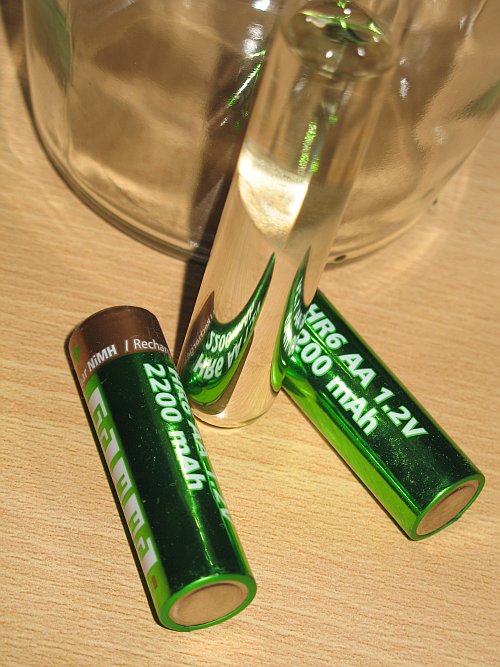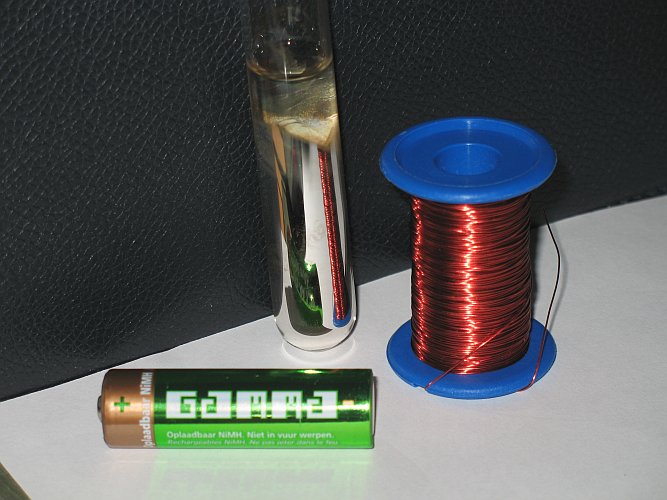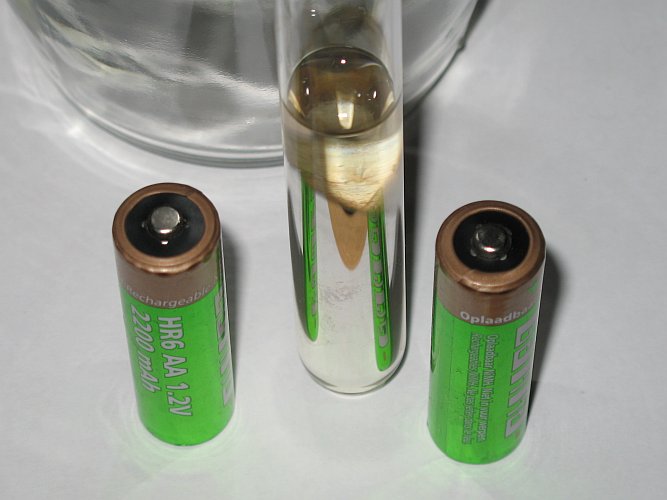


Silver mirror from ammoniacal silver solution
When a silver salt is dissolved in aqueous ammonia, then a complex is formed, being Ag(NH3)2+. Such solutions form nice silver mirrors on thoroughly cleaned and smooth surfaces, when treated with mild reductants. This page describes how such a silver mirror can be made.
- Dissolve a spatula of silver nitrate in a small amount of water.
- Add a solution of ammonia, in which a small quantity of NaOH is dissolved as well (quantities are not critical, a spatula full of NaOH added to 10 ml of 5% NH3 is suitable). First, a brown precipitate is formed. Add more ammonia/NaOH-solution, until this precipitate dissolves again.
- Make a solution of glucose or glycerol in water and add the ammoniacal alkaline silver solution to this and swirl the solution a little bit, such that the chemicals are mixed well.
- Carefully heat the solution and try to heat evenly all of the surface, where the mirror needs to be made. Heating to 60 şC gives nice results. This can be done by putting the test tube under a running hot tap.
When the above procedure is followed, then slowly a mirror of metal is formed. First, the glass seems to become brown, but at a certain point, the true mirror shows up. At the inside in the liquid, the mirror is not nice and shiny, but light brown. Only the interface with the glass is like a mirror. The three pictures below show the silver mirror on the inside of the test tube.



Just above the silver mirror, one can also see the inside of the mirror (the side, which is in contact with the liquid). The pictures show its light brown/beige color and its non-shiny appearance.
A silver mirror is not formed from plain aqueous silver(I) ions. If e.g. silver nitrate is dissolved in water and glucose or glycerol is dissolved in this as well, then no mirror is formed. Not even boiling of the solution causes appreciable formation of silver metal. This is in strong contrast with the ammoniacal silver solution, which forms a mirror easily.
A word of warning, when performing this experiment: Do not store the ammoniacal silver solutions. Within a few hours, these solutions decompose and the highly explosive fulminating silver is formed. This material is extremely motion-sensitive. Once it is formed, then even simple sloshing around of the liquid may trigger an explosion.
The ammoniacal silver solution can easily be destroyed by adding an excess of hydrochloric acid, such that the solution becomes acidic. The silver then precipitates as AgCl.